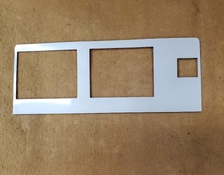gordrob
Subscriber
Does anyone have a recipe for making a shellac glue using shellac flakes and 99% isopropyl alcohol. I have taken the bezel off of a Mamiya Press Super23 and now need to reattach it. From information I have been able to find tells me that the metal bezel was originally attached to the body using Shellac glue. The one article I have found recommends 1 gram of shellac flakes to 4mm of denatured alcohol. I have tried this using 99% isopropyl alcohol instead of the denatured alcohol but I couldn't get it to work. Does anyone have a method of making a glue from the Shellac flakes. The reason I want to use the shellac glue instead of a hot glue or contact cement is to be able to remove again if I have to by using a heat gun.



